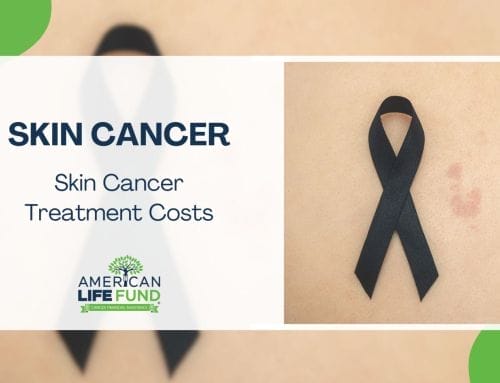Curious about the prognosis of stage 4 cancer? Stage 4 cancer is generally considered the most severe stage of cancer. It indicates that the cancer has spread from its original site to other parts of the body, which can make treatment more challenging and often reduces the likelihood of remission. Stage 4 cancer is serious but not always terminal. The prognosis depends on the cancer type, treatments available, and the patient’s health. Modern treatments have improved outcomes, allowing some people with stage 4 cancer to live longer and healthier lives. Always consult healthcare professionals for specific guidance.
Perhaps you’re wondering, “Can I overcome stage 4 cancer?” The answer lies in the nuances of the specific cancer you’re confronting. Each type has unique treatment options, life expectancies, and survival rates. Seeking prompt medical attention and discussing with healthcare professionals is crucial to navigating the best course of action tailored to your case.
If you’re grappling with a cancer diagnosis and also hold a current life insurance policy, you may qualify for a viatical settlement—a process enabling you to sell your life insurance policy for a cash payment. If immediate financial support is a priority, explore this opportunity to see if you qualify by visiting us here. Remember, you don’t have to face this journey alone—we’re here to support you every step of the way.

What is Stage 4 Cancer?
Stage 4 cancer, also known as metastatic cancer, is the most advanced stage of cancer. At this stage, the cancer cells have spread from their primary site to other body parts through the lymphatic system or the bloodstream. Secondary tumors in distant organs characterize Stage 4 cancer.
Is Stage 4 cancer the worst? Undoubtedly, it is the most severe stage one can face.
But what exactly does Stage Four cancer signify? When cancer reaches Stage 4, it indicates an advanced and progressed state. At this stage, the cancer has spread from its original site to other areas or organs of the body. As the most advanced form of the illness, Stage 4 cancer generally carries a discouraging prognosis.
You may wonder, “How bad is stage 4 cancer?” The truth is that stage 4 cancer can often be a devastating diagnosis. It has the potential to be terminal. However, it’s important to note that it is not always the end. Even in terminal cases, patients can surpass expectations and live longer than anticipated. There is room for hope and possibilities beyond the prognosis.
While Stage 4 cancer poses significant challenges, it’s essential to remain resilient and explore all available treatment options. Every individual’s journey is unique, and medical advancements provide new avenues for fighting this battle.
Metastatic Cancer
Metastatic cancer is another common name for Stage 4 cancer. More specifically, ‘metastatic’ refers to the process of ‘metastasis,’ by which cancer spreads from its primary site to a distant secondary area of the body.
Solid Tumors vs. Liquid
Cancer can occur in one of two different forms: solid tumors or liquid cancers.
When cancer forms a solid mass or tumor, it is called a ‘solid tumor’ cancer. In this type of cancer, tumorous masses form in a specific bodily organ, such as the breasts, lungs, or ovaries—for example. Solid tumors can occur anywhere in the body.
On the other hand, ‘liquid cancers,’ or ‘liquid tumors,’ refer to those that specifically affect the blood, bone marrow, or lymph nodes of the body only. Leukemia, Lymphoma, and Myeloma are examples of liquid cancers.
Causes And Risk Factors
The development of Stage 4 cancer can be attributed to several causes and risk factors. These include:
- Late-stage diagnosis: Delayed detection of cancer increases the likelihood of it progressing to Stage 4.
- Cancer recurrence: Cancer that has returned after initial treatment can reach an advanced stage.
- Metastasis: Cancer cells can spread from the primary site to other organs, leading to Stage 4 cancer.
- Genetic mutations: Certain genetic abnormalities can increase the risk of developing advanced-stage cancer.
- Environmental factors: Exposure to carcinogens, such as tobacco smoke or asbestos, can contribute to cancer progression.
- Age: Advanced age is associated with a higher risk of developing Stage 4 cancer.
Stage 4 Cancer Symptoms And Signs
Stage 4 cancer may present a variety of symptoms, depending on the type and location of the cancer. Some common signs include:
- Persistent fatigue and weakness
- Unexplained weight loss
- Chronic pain or discomfort
- Difficulty breathing or shortness of breath
- Abdominal bloating or swelling
- Persistent cough or hoarseness
- Changes in bowel or bladder habits
- Skin abnormalities, such as jaundice or new moles
It’s important to note that other conditions can also cause these symptoms. Hence, a proper medical evaluation is necessary for an accurate diagnosis.
The Cancer Stages
Like many other life-threatening illnesses, cancer is diagnosed in stages. Generally, stages are calculated on a scale from 0-4 and have to do with factors including the tumor size, how far it has spread, and where in the body it is located. However, there are several other common ways cancer stages are diagnosed.
TNM Staging System
One of the most common cancer staging systems is the TNM system. The acronym “T” stands for “tumor” and describes the features of the primary tumor. “N” is for “nodes” and explains whether or not cancer has spread into the patient’s lymph nodes. Finally, “M” stands for “metastasized” and indicates whether or not the cancer has spread to other body areas.
Binet And Rai Systems
Binet and Rai are the staging systems that specifically diagnose Chronic lymphocytic leukemia (CLL), a non-tumorous cancer of the blood and bone marrow. Both systems use the patient’s white blood cell count to determine how far their cancer may have spread and what areas of the body are being affected.
Cancer Grading
Cancer grading is the process of describing the appearance of cancer cells under a microscope. The grading system has three categories. Grade 1 is assigned to cancer cells that look more normal and are growing at a slower pace. Grade 2 indicates that the cancer cells look different from normal cells and grow faster. Grade 3 indicates that the cancer cells look even more abnormal and may spread or grow more aggressively than Grade 2.
Testing & Biopsy
Testing and biopsy are some of the more general ways of determining the potential stage of cancer. Testing can provide information about the cancer’s location in the body and can include CT scans, X-rays, ultrasounds, MRIs, and PET scans. A biopsy is a process whereby the doctor will remove a small portion of an identified tumor and have it tested in a lab to determine whether or not it’s cancerous.
Stage 4 Cancer Treatment Options
How severe is stage 4 cancer? When it comes to treating Stage 4 cancer, there are a few different commonly used methods, which we will examine below.
Please remember that whether or not an individual is a candidate for the following treatment options depends upon certain variables— so it is always best to consult your doctor directly to find out which stage 4 cancer treatments are most appropriate for you.
Clinical Trials
Clinical trials are research studies in which cancer patients can participate. The purpose of a clinical trial is to utilize a specific treatment approach in combination with new approaches, such as a new type of medication or a new combination of medications. Sometimes, at the research institutes, clinical trials even attempt to use an already established treatment method in a new way, hoping to achieve better results over time.
Clinical trials can allow patients access to new and innovative cancer treatments that may be successful.
Systemic and Common Drug Treatments (Chemotherapy and Immunotherapy)
Chemotherapy is how anti-cancer drugs are used as a cancer treatment method. Because chemotherapy is aimed at destroying cancer cells, it has effectively cured cancer in some people. While chemotherapy may not be completely effective in curing Stage 4 cancer, it does offer the benefit of easing and relieving some of its symptoms—which is certainly a step in the right direction.
Additionally, immunotherapy is the process by which a patient’s immune system is stimulated to encourage the body to fight off cancer. One common form of immunotherapy treatment utilizes various drugs, known as ‘checkpoint inhibitors,’ to encourage the immune system to identify and attack cancer cells independently. There are many forms of immunotherapy, so it’s best to consult your doctor to learn more.
Surgery
Surgery is commonly used to treat cancer caused by solid tumors, specifically those in one area. Cancer is considered Stage 4 when it has spread to more than one body area. For this reason, using surgery to treat Stage 4 cancer is uncommon—but it does happen occasionally.
Surgery is often deemed appropriate for Stage 4 cancer only if the original cancerous tumor is not large and the tumors that have spread are small in size and number. When this is the case, surgery may be possible.
Radiation
Radiation therapy is a cancer treatment that uses radiation technology to shrink cancerous tumors. High radiation levels can kill off cancer cells by slowing their growth and effectively damaging them over time. Radiation therapy has been shown to cure cancer effectively in some, but it is not always 100 percent effective for everyone. However, even when radiation does not cure one’s cancer, it still has the potential to reduce its size.
Many cancer patients also use alternative holistic cancer treatment and regular cancer treatments.

Types of Stage 4 Cancers And Their Treatment Practices
Stage 4 Lung Cancer And Treatments
Advanced lung cancer is diagnosed when it is determined that cancer has spread— either from one lung to the second lung or from the lungs to another part of the body. The most common organs metastatic lung cancer spreads to are the liver, brain, bones, or adrenal glands.
Stage 4 non-small cell lung cancer patients are usually inoperable, so the most common treatment methods tend to be targeted drug therapies, chemotherapy, radiation, and immunotherapy.
Chemotherapy and immunotherapy are most commonly used for stage 4 small cell lung cancer to treat symptoms while shrinking cancer.
Learn about how to get financial help for lung cancer
Stage 4 Prostate Cancer And Treatments
A stage 4 prostate cancer diagnosis means that cancer has spread beyond the prostate, usually to the adrenal glands, bones, lungs, or liver.
Treatment for stage 4 prostate cancer, also known as metastatic prostate cancer, can involve removing the prostate and providing hormone therapy. Other prostate cancer treatments include hormone-blocking therapy, which reduces the amount of testosterone in the body to help slow or shrink the growth of cancer. This hormone therapy is sometimes used alongside testicle removal on a case-by-case basis. Radiation therapy and chemotherapy are also occasionally used.
For those with advanced prostate cancer, check out the Financial Help for Prostate Cancer Patients available.
Stage 4 Colorectal Cancer And Treatments
Stage 4 colorectal cancer indicates that cancer has spread from the colon and rectal area to a more distant body area— usually the lungs, liver, or bones.
Treating stage 4 colorectal cancer can include surgery to remove the original tumor and any small tumors that may have spread. A partial Colectomy or full Ostomy procedure may also be necessary, and lymph node removal is possible. Chemotherapy and targeted drug therapies are the main treatment methods for tumors that are too large and have spread to too many different areas.
Financial Help for Colon and Colorectal Cancer Patients
Stage 4 Breast Cancer And Treatments
Is stage 4 breast cancer terminal? Stage 4 breast cancer – also known as metastatic breast cancer, is diagnosed when it is realized that cancer has spread beyond the breast and its immediate surrounding areas to other, distant areas of the body. The most common organs advanced breast cancer cells spread to are the lungs, liver, brain, or bones.
When it comes to stage 4 breast cancer treatment, systemic drug therapies are the main method. These can include any combination of chemotherapy, hormone therapy, immunotherapy, and targeted drug therapy. In some situations, radiation and surgery may also be possible.
Financial Help for Breast Cancer Patients
Stage 4 Cancer Survival Rate And Life Expectancy
Survival Rates
How long can someone live with stage 4 cancer? Generally, survival rates for advanced cancer depend upon a few different variables, including the type of cancer, its grade, and the patient’s age and overall health.
Survival Rate List
Stage 4 terminal cancer life expectancy is complicated. Below, you’ll see our Survival Rate Chart, which offers further insight into the specifics of the survival rates of different cancer types.
Stage 4 Cancer Average 5-Year Survival Rate According to the American Cancer Society:
- Non-Small Cell Lung Cancer: 7%
- Small-Cell Lung Cancer: 3%
- Prostate Cancer: 30%
- Colorectal: 14%
- Breast Cancer: 28%
Other useful Stage 4 Cancer statistics shared by the National Cancer Institute states:
- It is estimated that there are 18.1 million cancer survivors in the United States. This represents approximately 5.4% of the population
- The number of cancer survivors is projected to increase by 24.4%, to 22.5 million, by 2032
- The number of cancer survivors is projected to grow to 26.0 million by 2040
- Over the next decade, the number of people who have lived five or more years after their cancer diagnosis is projected to increase by approximately 30% to 16.3 million
Finding Support
Navigating a Stage 4 cancer diagnosis can be scary. How long does stage 4 cancer last? There is no specific answer to this question, but the good news is that help is always available, and you are not alone.
Counseling
Many cancer patients benefit from sharing their emotional experiences with a counselor. A counselor can help patients learn effective ways of managing feelings of depression and anxiety and can offer healthy coping methods.
Different forms of counseling are available with various types of professionals, including therapists, psychiatrists, social workers, medical oncology workers, counselors, etc—meaning your options are certainly not limited when finding the right professional to serve you best.
Cancer Care Team / Pain Clinics
If you’re looking for support during this time, working with your oncologist and cancer care team can be helpful. Many teams include a ‘patient navigator’ assigned to guide you through the different stages of your diagnosis and connect you to helpful resources to assist you.
Pain clinics or palliative care are other options. Your palliative care team supports you by treating and preventing the painful and uncomfortable side effects that can result from certain forms of cancer treatment.
Support Groups
Cancer support groups offer a safe space for people battling cancer to unite and share their emotions and experiences living with cancer. For many, these support groups serve as a community and social support system. They can be a wonderful resource for those coming to terms with their cancer diagnosis.
Financial Assistance
We know that affording Stage 4 cancer treatment can be a stressful and emotional experience, which is why, here at American Life Fund, we work to help cancer patients financially. If you have been diagnosed with Stage 4 cancer, have a current life insurance policy, and need immediate cash to pay for treatment—you may be eligible for a viatical settlement. Learn more and see if you qualify by visiting us here.
Also, take a look at some of our articles on how to find financial assistance and free money for cancer patients:
- Financial Assistance & Free Money For Cancer Patients
- 30+ Organizations and Charities That Help Cancer Patients Financially
Support Resources And Organizations
Various organizations and support resources are available to assist individuals and families affected by Stage 4 cancer. These include:
- American Cancer Society (ACS)
- Cancer Support Community
- National Cancer Institute (NCI)
- Hospice and Palliative Care Organizations
- Cancer-specific support groups and foundations
These organizations provide valuable information, emotional support, educational resources, and practical assistance to those in need.
Conclusion
Receiving a stage 4 cancer diagnosis can be overwhelming. It’s important to remember that every patient’s experience with cancer is different, and there is always hope, regardless of the statistics. Patients must have access to the right treatment options, support systems, and resources to help them navigate this difficult journey.





